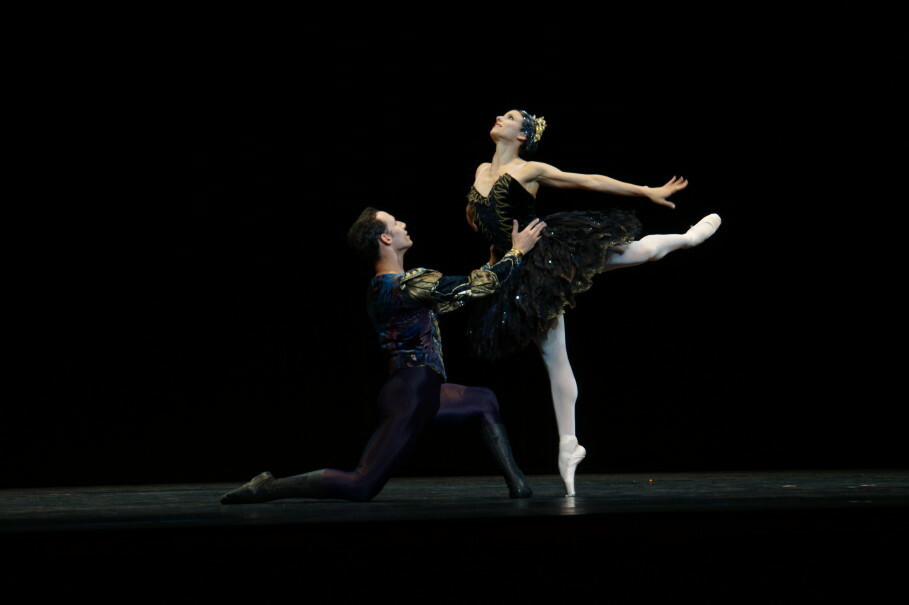Jakarta : Indonesian Ballet Gala Dancers Reach Beyond Physical Limitations
.
Jakarta. From dancing on wheelchairs to the Black Swan’s daunting 32 fouettés, the Indonesian Ballet Gala gathered eight international groups of able-bodied and differently abled dancers to participate in “An Inclusive Dance Event” at Jakarta Theater in Taman Ismail Marzuki, Central Jakarta, on Saturday (23/09).
The Jakarta Globe had the opportunity to watch the performance’s preview a day before.
It is the second edition of the biannual Indonesian Ballet Gala, which was initiated by Ballet Indonesia Foundation (Ballet ID), a non-profit organization of professional and aspiring dancers.
Ballet ID founder Mariska Febriyani chose to focus this year’s event on inclusivity, and to make the wider public aware that physical disability is no limitation in expression of art and skills.
“The idea to make an inclusive dance event came when I participated in ‘Unlimited Festival’ in Glasgow, where I met many disabled dancers who excelled in what they did,” she told the Jakarta Globe.
She was invited to the festival in 2016 by British Council Indonesia along with fellow Ballet ID producer Belinda Oh, Young Voices Indonesia member Annisa Rahmania and artist Hana Madness.
Mariska praised the work ethics and determination of the dancers she met in Scotland. With skills and craft they could overcome physical limitations.
“This is what we have to ‘transfer’ to Indonesian dance scene, so that our dancers could stand out, beyond physical, spatial and time limitations,” said the seasoned ballerina, who used to be with Bangkok City Ballet.
Dancer and choreographer Mirjam Gurtner from Candoco Dance Company, United Kingdom, said the event is important for the sake of equality.
“It’s about shifting people’s gaze, not pitying and helping disabled people or dancers … it’s about showcasing artistic excellence, and it’s about creating equal opportunities for different bodies or physicalities to be represented onstage,” she said.
Challenges
A year after the Scotland visit, Mariska and her team managed to turn their inspiration into reality, although she had faced difficulties in finding a venue, places for rehearsals, and accommodation that would be disability-friendly.
“I don’t know why many dance studios are located on the second floor, in buildings that have no elevators. That’s quite an obstacle, because some of our dancers are in wheelchairs,” she said.
Another challenge was the financing. Mariska said her team did not succeeded in obtaining the government’s support, because ballet is still viewed as foreign.
Embracing Inclusivity on Indonesian Stage
The 2nd Indonesian Ballet Gala began with “Sound Machine,” a lively collaborative performance by Eksotika Karmawibhangga Indonesia (EKI) Dance Company and the Foundation for the Advancement of Children With Disabilities (YPAC Jakarta).
Eight children in wheelchairs from YPAC Jakarta sang “Kicir-Kicir,” “Selayang Pandang” and “Yamko Rambe Yamko.” Dancers from EKI encircled them with dynamic, acrobatic stunts.
The choreography was successfully designed to make them equal. The kids were not supporting players to the jumping and somersaulting dancers. The dance was fun, energetic and thoughtfully planned. All performers were in the spotlight.
French dancer and stage actress Magali Saby shared the stage with five Indonesian dancers. Presenting “La Fille de L’air,” they depicted a girl’s rites of passage — from before she was born up to her old age.
Saby and her team went back and forth from portraying childhood and first love to the mature journey of life.
CANdoDANCE presented “Could Passade” that examined the bodily relationship between an individual and a group. Five deaf and seven hearing Indonesian female dancers explored proximity and distance, forming and separating, building and collapsing.
CANdoDance is an inclusive dance group that was formed two months ago in Jakarta by Candoco Dance Company UK, in cooperation with Ballet ID and British Council.
The final performance was “Black Swan Pas de Deux” by Yanela Piñera and Camilo Ramos from Queensland Ballet. The iconic moment when Odile seduces Prince Siegfried was powerfully brought by the dancers, who recently performed the full version of Tchaikovsky’s “Swan Lake” in Brisbane.
 ‘Black Swan Pas de Deux’ from Tchaikovsky’s ‘Swan Lake’ is performed by Yanela Piñera and Camilo Ramos from Queensland Ballet. (JG Photo/Dhania Sarahtika)
‘Black Swan Pas de Deux’ from Tchaikovsky’s ‘Swan Lake’ is performed by Yanela Piñera and Camilo Ramos from Queensland Ballet. (JG Photo/Dhania Sarahtika).
Award-winning disabled dancer Marc Brew gave a solo performance “Remember When.”
“When I acquired my disability in 1997, that’s like 20 years ago now, there weren’t that many disabled artists around working professionally, so it was quite a new thing. But now there are more disabled artists … and there’s more interest of people wanting to integrate and work together with disabled and non-disabled artists. The fact that there’s more happening means that there’s a real need and it’s bringing something different, unique, and wonderful to dance,” Brew told reporters.
Candoco’s Gurtner Daw and Daniel Daw performed “Studies for C,” a piece on a stagnating relationship, which Daw said was inspired by works of Tennessee Williams and Samuel Beckett.
Lastly, Hyeming Hwang and Dongtak Lee from South Korea’s Universal Ballet presented “La Bayadere Pas de Deux” set in the 19th century India.
This year’s gala was accompanied by inclusive dance classes by Brew, Saby and Queensland Ballet.
.
<>
NOTE : All photographs, news, editorials, opinions, information, data, others have been taken from the Internet ..aseanews.net | [email protected] |
.
For comments, Email to :
Zhubiz Chezmiz | [email protected] | – Contributor










